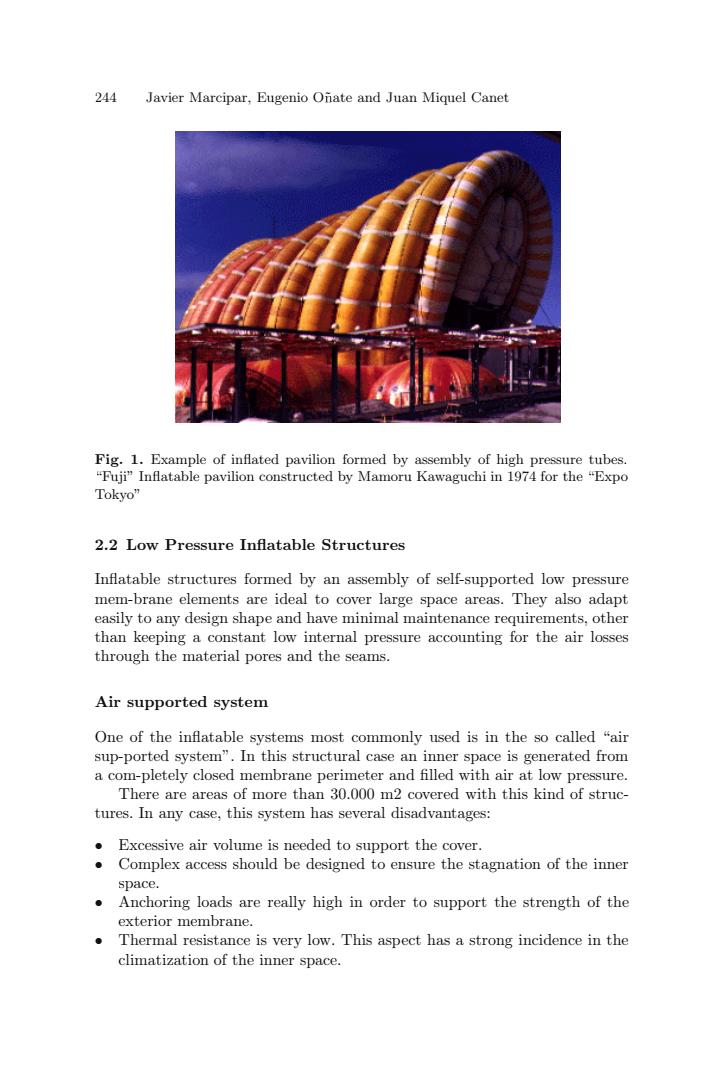正在加载图片...

244 Javier Marcipar,Eugenio Onate and Juan Miquel Canet Fig.1.Example of inflated pavilion formed by assembly of high pressure tubes. "Fuji"Inflatable pavilion constructed by Mamoru Kawaguchi in 1974 for the "Expo Tokyo” 2.2 Low Pressure Inflatable Structures Inflatable structures formed by an assembly of self-supported low pressure mem-brane elements are ideal to cover large space areas.They also adapt easily to any design shape and have minimal maintenance requirements,other than keeping a constant low internal pressure accounting for the air losses through the material pores and the seams. Air supported system One of the inflatable systems most commonly used is in the so called "air sup-ported system".In this structural case an inner space is generated from a com-pletely closed membrane perimeter and filled with air at low pressure. There are areas of more than 30.000 m2 covered with this kind of struc- tures.In any case,this system has several disadvantages: Excessive air volume is needed to support the cover. Complex access should be designed to ensure the stagnation of the inner space. Anchoring loads are really high in order to support the strength of the exterior membrane. Thermal resistance is very low.This aspect has a strong incidence in the climatization of the inner space.244 Javier Marcipar, Eugenio O˜nate and Juan Miquel Canet ˜ Fig. 1. Example of inflated pavilion formed by assembly of high pressure tubes. “Fuji” Inflatable pavilion constructed by Mamoru Kawaguchi in 1974 for the “Expo Tokyo” 2.2 Low Pressure Inflatable Structures Inflatable structures formed by an assembly of self-supported low pressure mem-brane elements are ideal to cover large space areas. They also adapt easily to any design shape and have minimal maintenance requirements, other than keeping a constant low internal pressure accounting for the air losses through the material pores and the seams. Air supported system One of the inflatable systems most commonly used is in the so called “air sup-ported system”. In this structural case an inner space is generated from a com-pletely closed membrane perimeter and filled with air at low pressure. There are areas of more than 30.000 m2 covered with this kind of structures. In any case, this system has several disadvantages: • Excessive air volume is needed to support the cover. • Complex access should be designed to ensure the stagnation of the inner space. • Anchoring loads are really high in order to support the strength of the exterior membrane. • Thermal resistance is very low. This aspect has a strong incidence in the climatization of the inner space